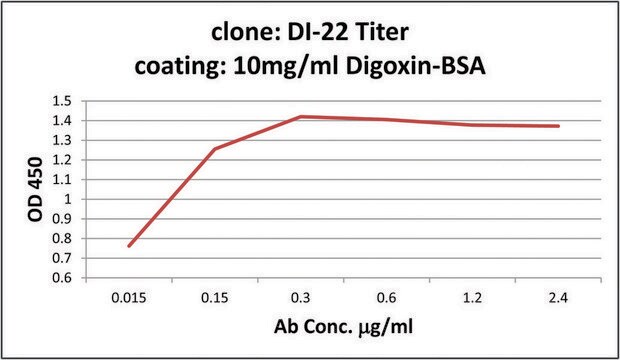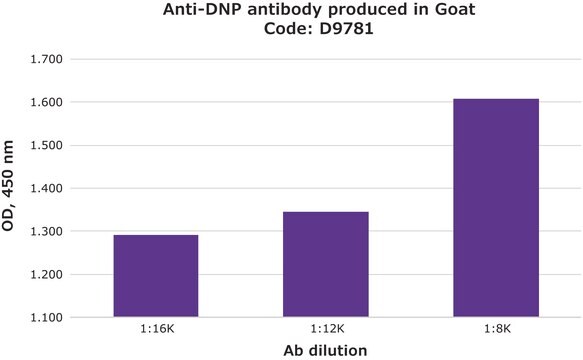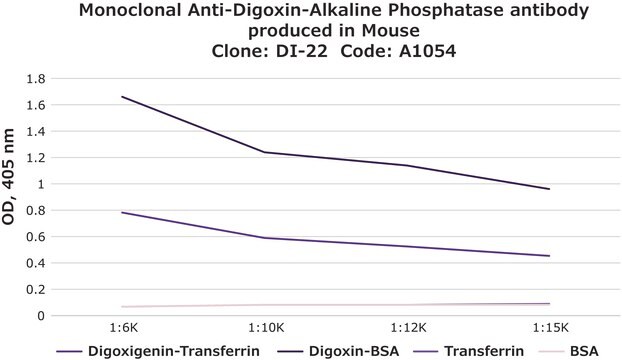Key Documents
D8156
Monoclonal Anti-Digoxin antibody produced in mouse
clone DI-22, ascites fluid
Synonim(y):
Monoclonal Anti-Digoxin
About This Item
Polecane produkty
pochodzenie biologiczne
mouse
białko sprzężone
unconjugated
forma przeciwciała
ascites fluid
rodzaj przeciwciała
primary antibodies
klon
DI-22, monoclonal
zawiera
15 mM sodium azide
metody
dot blot: suitable
flow cytometry: suitable
indirect ELISA: 1:10,000 using digoxin-BSA
indirect ELISA: 1:2,500 using digoxigenin-transferrin
izotyp
IgG1
Warunki transportu
dry ice
temp. przechowywania
−20°C
docelowa modyfikacja potranslacyjna
unmodified
Szukasz podobnych produktów? Odwiedź Przewodnik dotyczący porównywania produktów
Powiązane kategorie
Opis ogólny
Specyficzność
Immunogen
Zastosowanie
- enzyme-linked immunosorbent assay (ELISA)
- dot blot
- flow cytometry
- fluorescence in situ hybridization (FISH)
- DNA hybridization
- in-situ hybridization (ISH)
- immunodetection of the probe and chromosome X
Działania biochem./fizjol.
Oświadczenie o zrzeczeniu się odpowiedzialności
Nie możesz znaleźć właściwego produktu?
Wypróbuj nasz Narzędzie selektora produktów.
Kod klasy składowania
12 - Non Combustible Liquids
Klasa zagrożenia wodnego (WGK)
nwg
Temperatura zapłonu (°F)
Not applicable
Temperatura zapłonu (°C)
Not applicable
Certyfikaty analizy (CoA)
Poszukaj Certyfikaty analizy (CoA), wpisując numer partii/serii produktów. Numery serii i partii można znaleźć na etykiecie produktu po słowach „seria” lub „partia”.
Masz już ten produkt?
Dokumenty związane z niedawno zakupionymi produktami zostały zamieszczone w Bibliotece dokumentów.
Klienci oglądali również te produkty
Nasz zespół naukowców ma doświadczenie we wszystkich obszarach badań, w tym w naukach przyrodniczych, materiałoznawstwie, syntezie chemicznej, chromatografii, analityce i wielu innych dziedzinach.
Skontaktuj się z zespołem ds. pomocy technicznej








